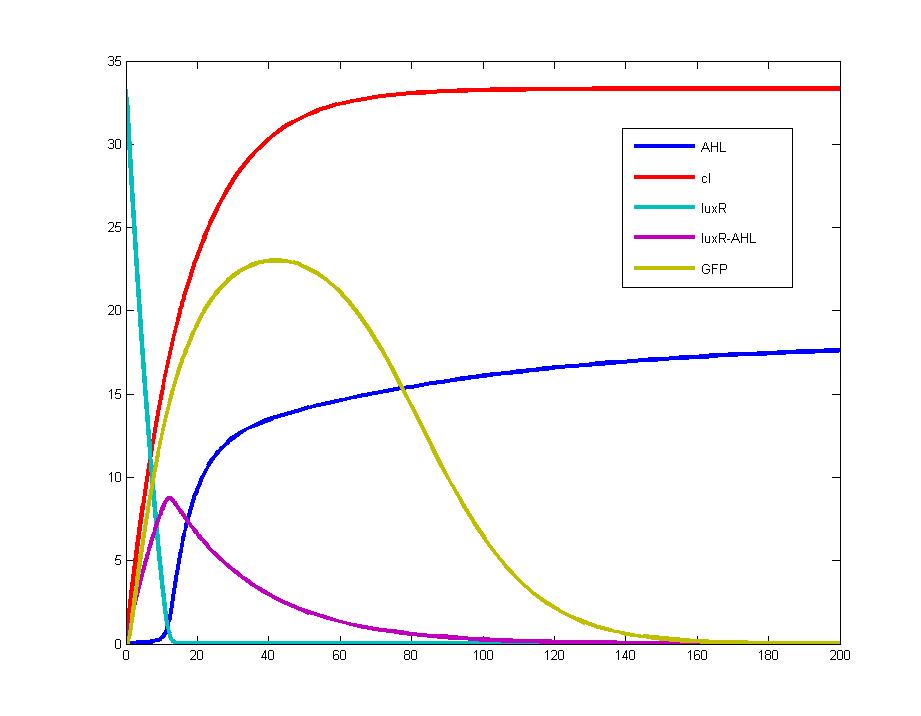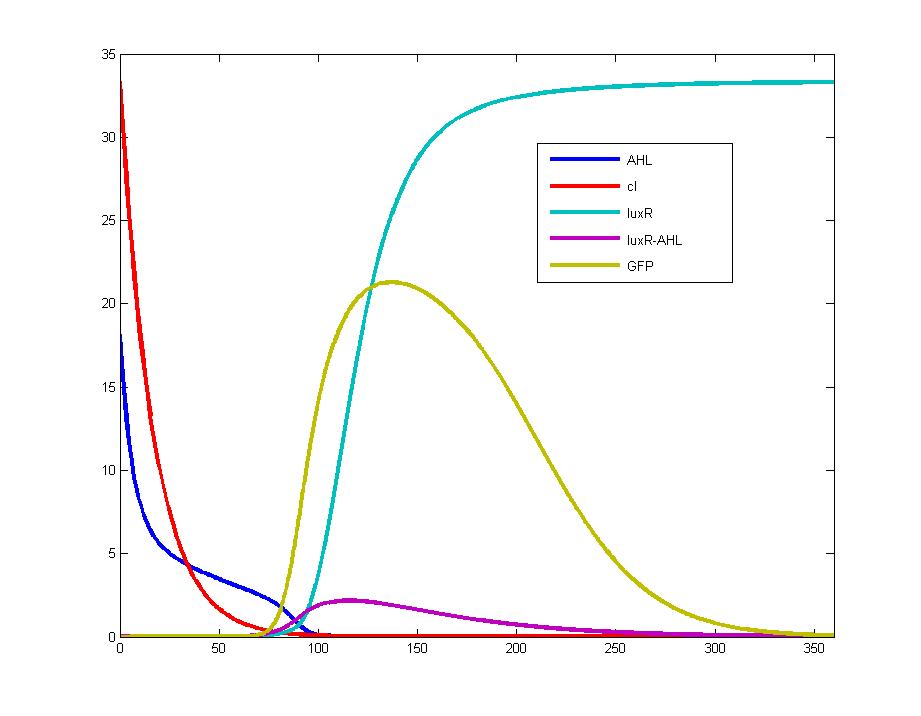Tianjin/FLIP-FLOP/Model11
From 2007.igem.org
(Difference between revisions)
Sunlovedie (Talk | contribs) |
Lovecarrot (Talk | contribs) |
||
| Line 1: | Line 1: | ||
{| | {| | ||
| - | These two pictures are drew with the same parameters | + | These two pictures are drew with the same parameters coming from related literature.Both figers point out that the output signal(GFP,yellow line) will form a pulse immediately after the input signal alters. |
<br> | <br> | ||
| - | Figure 1: This figer shows the | + | Figure 1: This figer shows the concentration variation of chemical moleculars when the input signal is at positive edge when t=0. |
[[Image:tjumodel11a.jpg|500px]]<br> | [[Image:tjumodel11a.jpg|500px]]<br> | ||
<br> | <br> | ||
| - | Figure 1: This figer shows the | + | Figure 1: This figer shows the concentration variation of chemical moleculars when the input signal is at negative edge when t=0. |
[[Image:tjumodel11b.jpg|500px]]<br> | [[Image:tjumodel11b.jpg|500px]]<br> | ||
|} | |} | ||

